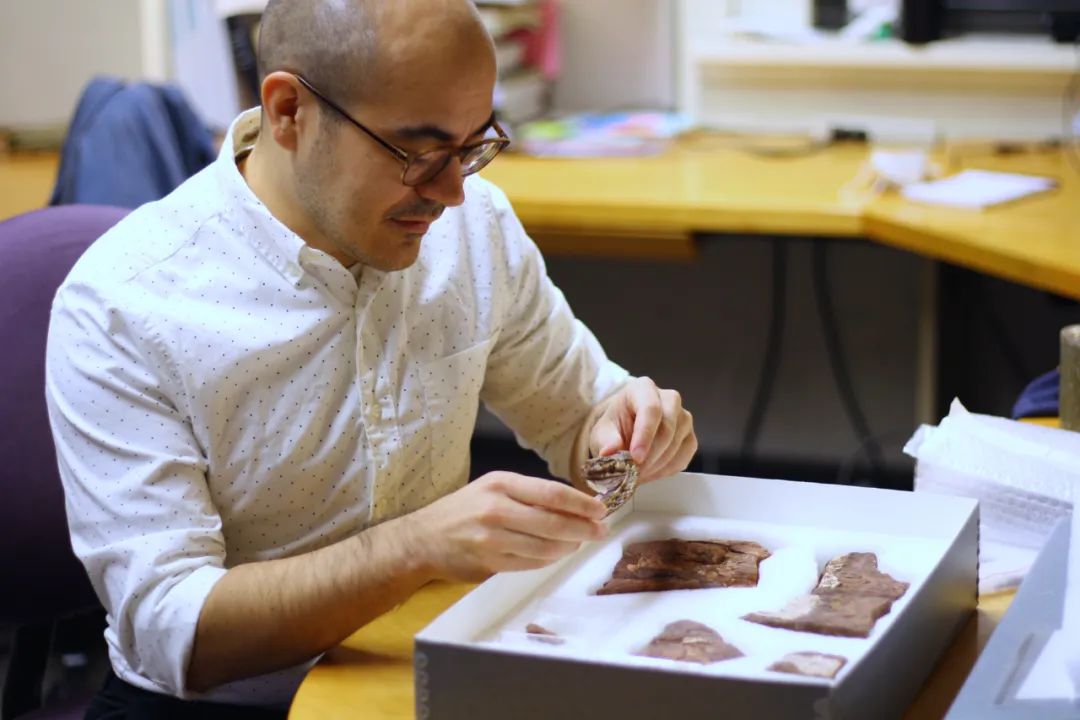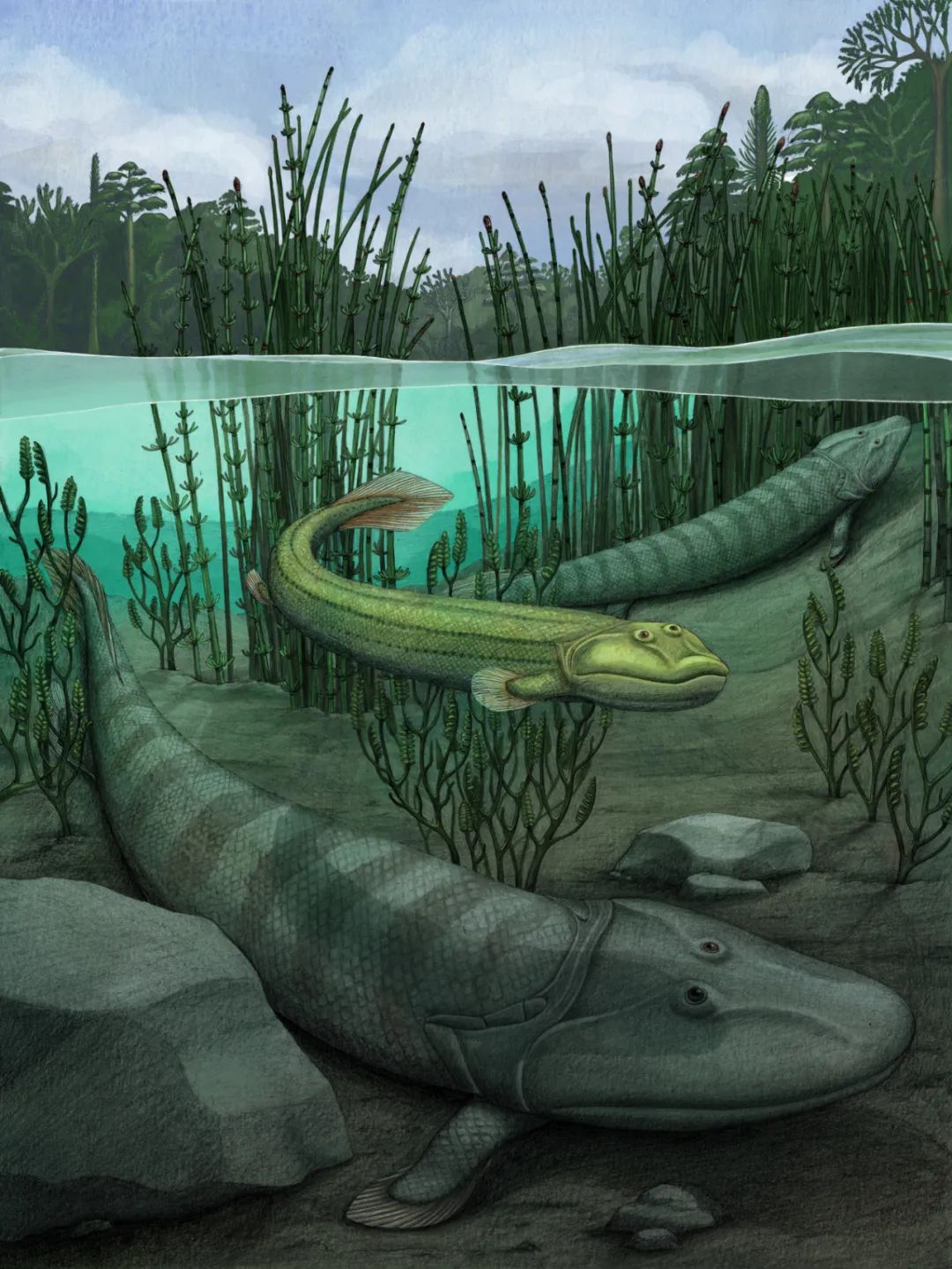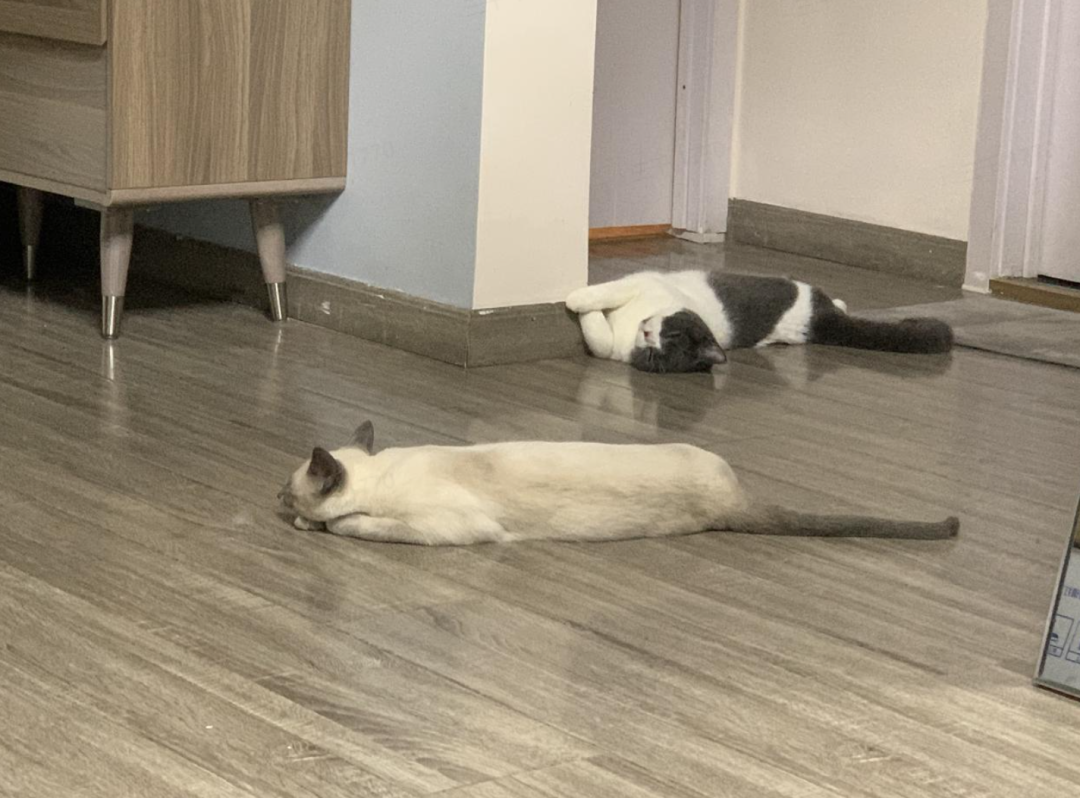If our ancestors choose to return to the water, what will happen: this may be the most cost -effective "retreat"
Author:Institute of Physics of the Ch Time:2022.08.29
Three -dimensional compound original (video source: Justin Lemberg)
It is easy for us to think that biological evolution is a simple linear process, but some findings remind us that the tree of life has many complex branches.
Written article | Erqi
CEIDE | Clefable
In the past two years, an old -fashioned paleontology that looks strange has once again entered people's vision. Its popularity is because (or should be said to be a category) stalk map: the center of the picture is a creature similar to fish and crocodile mixtures. "Go back to the water!".

Emoticon package (Original source: Zina Detsky; Drawing: Twenty -7)
To understand the meaning of this stalk, you need to have some background knowledge of biological evolution. In the picture, the biological name of the "fish non -fish, like non -螈 螈" is Ticatk fish, which shows the key stage of the evolution of animal evolution from fish to four -foot animal evolution: its pectoral fins are existing long bones supporting support The "arm" also evolved the flexible wrist joint. This shows that it can support the body with fins on the bottom of the water, and may occasionally take risks to the land and take a key step in fishing.
Now we can understand the meaning of this stalk: modern people who are exhausted want to travel through time, drive Tika Talik fish back to the water, terminate the evolution of the fish to the four -foot animal, and "fundamentally" to "fundamentally" Solve all kinds of problems facing human society.
In fact, a close relative of Ticatk fish does this: After evolving the ability to leave the water body, this creature has "retired" and chose to return to the water of peace of mind and trust, instead of going to land on land. Explore.
Fish with "arm"
The story still starts with Tick Talik fish. In 2004, Neil Shubin, the University of Chicago, found a unique fish fossil in the Canadian Arctic Circle. Like fish).
As a fish that has lived in about 380 million years ago, it shows a very close form of four -foot animals. The pectoral fins of Ticatk fish are more advanced than any fossil fish known at the time. It has a developed long bone support "arm" and has evolved a flexible wrist joint. The skulls of Ticatk fish are also very unique, with long and flat kisses and brain skulls similar to four -footed animals.
In 2006, the research was published in the magazine of nature, which caused a great sensation. From then on, Ticatk fish has almost become synonymous with "from fish to 螈", so that when people try to trace the "root" of global issues facing the present, they all chose it.

Image source: "Global Science" June 2021; Drawing: Brian Choo; Drawing: Emily S. Damstra (Emily S. Damstra)
In fact, Ticatk fish was not the only harvest of Shubin's trip to the Arctic Circle. A few days before the discovery of Ticatk's fish fossils, Shubin and colleagues had discovered it about 1500 meters away. Other fossils scattered in rocks.
"On the surface of the rock, we can see the fragments of the jaw, about 5 cm long, with sharp teeth. In addition, there are some mottled white scales." Thomas Stewart, an associate professor at the current Pennsylvania State University, recalled that He worked in Shu Bin's laboratory and participated in handling the fossils collected in the field.
The research team collected several such specimens, but after returning to the laboratory, the team's attention was placed on the Tikaparick fish. These specimens were placed deep in the warehouse, waiting for further inspection. Stuart is checking the fossil specimen (picture source: Tom Stewart)

Bead of the world
In 2020, with the efforts of Stuart and colleagues, these fossils were "re -see the sun". From the perspective of the outer scales and jaws, this is obviously a creature that lives underwater and has strong predation -maybe a four -legged animal like Ticatk fish. This caused researchers to look at the thoughts of the fossil hidden inside the rock.
They used the recent "popular" technology of paleontology -micro -CT scanning. This method uses X -rays to penetrate inside the rocks, which can be distinguished by different density fossils and rocks, so as to reproduce the fossil buried in the rock without destroying the rocks.
CT images show that these rocks include almost complete pectoral fins and upper limbs, especially a unique humerus (corresponding to our upper arms). At first, the researchers thought that this was a young Ticatk fish, because it was smaller, and the differences in most bones could be explained by "not developing". But the humerus of this fish suddenly distinguished it from the Ticatk fish.
"Early four -legged animals, such as Tittalik, have a prominent ridge on the lower side of the humerus, and a very recognizable bulge -muscle is attached here. These bone characteristics tell us that these four are these four. The ancestors of the feet have a powerful fin before landing, or they can also be said to have an arm. "Stuart introduced. They live at the bottom of lakes and streams, support themselves with fins (or arms). The earliest people lived at the bottom of the water, and the latecomers gradually embarked on land.
Chikiktani Fish (central picture center) and Ticatk fish (picture source: Alex Boersma)

Retreating Drum first -class player
In a papers recently published in "Nature", Stuart and colleagues officially introduced this new fossil. It is named "Qikiqtania Wakei", which is named Qikiqtaaluk from Inte, which is the name of the fossil site. The species Wakei is to commemorate the late evolutionary biologist David Wake.
The fins of Chikiktani fish are different from any fish or four -footed animals we have seen. Compared with those fish that have never been ashore, the fins of Chiciktany fish show a completely different pattern: it has grown developed aerated humerus (corresponding to our bones on the upper arm), radius and ulnar (corresponding Our two bones of our lower arms), which shows that they have gone through the evolution of the fins to limbs and are ready to log in.
However, compared with the four -legged animals who are working hard, the fins of Chikiktany's fish are obviously lacking power: compared with Tiktalik fish, its humerus becomes thinner, shaped like a rotary dart, and lacks lack of lack The parts that can be attached. Such weak fins are likely to be unable to support their bodies and can only be used to swim. System development analysis also seems to give similar answers: On the spectrum tree, the kicktani fish and Tiktalik fish are closer, belonging to tetraphon -shaped animals.
Three -dimensional compound picture of Chikiktani Fish Ship (Picture Source: Tom Stewart)
There is only one kind of speculation that can explain the contradictory fins most reasonably: when other early four -foot animals are playing by the water and trying to explore the vast land, Chiciktany fish chose a different way: they tried to leave leave In the water, but turning around in the middle and returning to the water in the water. "Ticatley is often regarded as a transitional animal, because you can easily see the changes in life in the water in the water. But we know that things are not always simple in the evolution process." Stuartttt Said that evolution is not a simple linear process, but a complex tree. In the process of evolution, different branches will move in different directions, and some can evolve all the way all the way, while others will disappear in the long river of life history.
"Chikiktani fish shows a rare process," Stewart said, in a general sense, Chikika is not a "successful" species, but "it allows us to see that branch of the branch. The tree of life of dryness. "
Related thesis:
https://www.nature.com/articleS/nature04637
https://www.nature.com/articleS/S41586-022-04990-w
Reference link:
"Global Science" June 2021 Magazine P42-49
https://www.eurekalert.org/news-releases/958886
https://theconrsation.com/meet-qikiqtania-fossil-with-the-good-sense-to-in-water-wHile-offExto-Land-186116
Reprinted content only represents the author's point of view
Does not represent the position of the Institute of Physics of the Chinese Academy of Sciences
If you need to reprint, please contact the original public account
Source: Global Science
Edit: lychee jelly

- END -
The recent state of people in the country: 近

Today I was — this is the last solar term in summer.In this period of 48 hours, y...
Real -time digital twin is not a simple copy game

Since the birth of digital twins, it has gone through the formal evolution of diff...